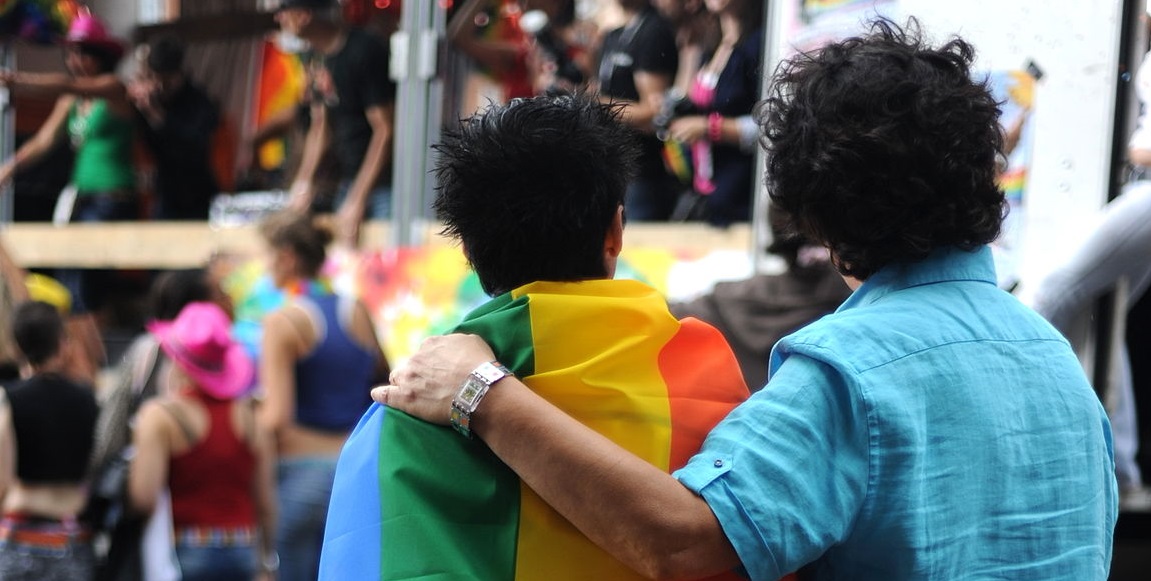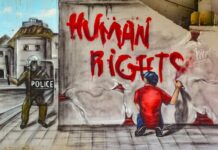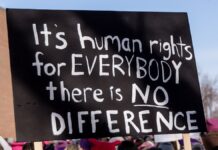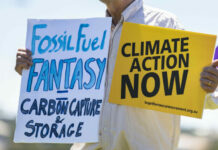May 17 is International Day Against Homophobia, Transphobia and Biphobia. Queer rights activist Gabriel Hoosain Khan gave the following speech at the Dutch Embassy in Pretoria, about the queer stories that have been a part – albeit often unseen – of South African history.
Love blossoms in unlikely places. For example, love blossomed twice in 1735. First it blossomed in the form of the Protea – discovered by Carl Linneus. Of course IsiQwane – the protea – was not discovered by that proponent of scientific racism, but white men are infatuated with finding and naming objects I guess. Second queer love blossomed on Robben Island, between two men: Class Blank (a Khoi cattle herder) and Rijkaarts Jacobs (a sailor from Amsterdam). Two men imprisoned on Robben Island find love and are punished for it. In 1735, the Dutch colonial court, sentences Claas and Rijkaarts to death, by drowning in Tafel Bay.
There is something about this love that gets me in the gut. The romance of it – an interracial couple, a same-sex relationship, a beautiful love in 1735. But this is not the story I want to tell. The story I want to tell is about the foundation of the gay narrative in Africa – it is one we cannot separate from our inherited colonial law, not here, or arguably any other part of the African continent where colonial law was enforced. These colonial laws policing sodomy, and our reactive response created an activism which prioritised men and invisibilised women. For example – there are few written accounts of same-sex relationships between women from that that time, this doesn’t mean they didn’t occur. But colonialism and patriarchy make handsome bedfellows.
Visibility blossoms in unlikely places. For example, queer visibility blossomed once in 1910. I see the picture of labelled Moffies at the Carnival, year: 1910 at the District Six Museum in Cape Town. A coloured person in a knee-length dress peers back at me, peers one hundred years into the future. The picture is black and white, but I imagine some bright colours. I don’t know anything about this queer face, I wonder about their life, I wonder about how safe they felt wearing a dress at that time?
There is something about this picture that makes me tear up. The beauty of a person of colour, a gender non-conforming person, just standing confidently in 1910. But this is not the story I want to tell. The story I want to tell is about how the queer narrative is one that is always in conflict with a colonial notion of gender. This regressive binary gender writes over indigenous and creole languages and practices which do not conform to the limits of the he and the she. I wonder why we lost the word moffie to the homophobes. I guess language and invisibility make convenient bedfellows.
Resistance blossoms in unlikely places. For example, queer resistance blossomed once in 1989. Simon Nkoli planned the first Pride march in South Africa. The march of around 800 people started from the Centre for Race Relations in Braamfontein and knitted, for the moment, the racial divides of the city center of Johannesburg. The march channeled the spirit of the anti-apartheid resistance, and in starting at the Centre for Race Relations aimed to highlight that racial liberation in inseparable from freedom from violence based on sexual orientation. Bev Ditsie said of that moment: “I am black and lesbian and a woman – and these identities are inseparable. The march aimed to iterate that reality.”
There is something so powerful about this moment. The power of a queer march starting from a clear anti-racist position. But once more – this is not the story I want to tell. The story I want to tell is about an awful error – the error of attempting to legitimize the struggle for a queer liberation with the iterations of the nation state. We won many legal battles after ’89 with the strategy culminating in the legalization of same-sex marriage in ’06. However, the focus on reforming the law meant that we were “supposedly” able to able to fix protections for lesbian women to access marriage – but how useful is a state-sanctioned marriage when the state turns a blind eye to the recurring murder and rapes of black, lesbian women, often from townships? I guess that unfortunately civil society and the state make strange bedfellows.
Love dies in unlikely places. For example, love died brutally this weekend in Naledi, Soweto. Lerato Tambai Moloi was murdered on Saturday night as she walked home from after a night out. The brutality of the murder, of which I won’t describe here, was as heavy as our colonial and apartheid history, I imagine it felt like 300 years of pain. This moment is representative of the contradictory position the LGBTI community are in, on one hand having world class legal protections, but how useful are these legal protections in the face of cruel apartheid geography? I’ve heard those who are paid to legitimize the laws enjoy their heavy dinners, but I can assure you none of the poor, black, unemployed LGBTI people have been able to eat these papers.
There is an unfortunate opportunity in this moment. The opportunity for LGBTI organisations, academics and donors to come together to respond clearly to this human rights violation. But again – this is not the story I want to tell. The story I want to tell is about the ways focusing on LGBTI means that we do not respond to the base realities which make such violence possible. Would this violence be possible if we dealt, without doubt, with the toxic patriarchy apparent in South Africa (from the president to the ground)? We cannot honour Lerato without talking about the violence of gender. Would this violence be possible if we dealt, without hesitation, with the repercussions of a grossly racist geography? We cannot honour Lerato without talking about the racialised and colonial geography of the township. Would this violence be possible if we dealt, without hesitation, with the repercussions of economic injustice in South Africa? We cannot honour Lerato without talking about the inherited poverty of black South Africans. I wonder what our focus on LGBTI helps us avoid talking about?
Love, visibility and resistance blossoms in unexpected places for queer people. If we are to create a world where hate crimes and violence is not possible – we need to change the base circumstances which produce this violence. We need to respond with confidence to the racism, the toxic masculinity and the economic injustice which produces our violent realities. If we don’t change the circumstances, our responses are doomed to qualm the violence only momentarily.
Gabriel Khan is Programme Officer at Hivos South Africa. Gabriel managed the People’s Power project working to empower rural LGBTI communities.









